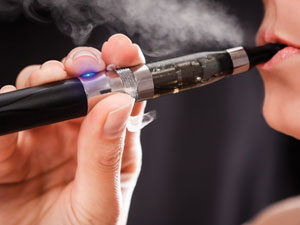This month sees the following articles in Environmental Science: Processes & Impacts that are in the top ten most accessed April – June:-
Energy positive domestic wastewater treatment: the roles of anaerobic and phototrophic technologies
B. D. Shoener, I. M. Bradley, R. D. Cusick and J. S. Guest
Environ. Sci.: Processes Impacts, 2014,16, 1204-1222
DOI: 10.1039/C3EM00711A
Human exposure to aluminium
Christopher Exley
Environ. Sci.: Processes Impacts, 2013,15, 1807-1816
DOI: 10.1039/C3EM00374D
A critical assessment of the photodegradation of pharmaceuticals in aquatic environments: defining our current understanding and identifying knowledge gaps
Jonathan K. Challis, Mark L. Hanson, Ken J. Friesen and Charles S. Wong
Environ. Sci.: Processes Impacts, 2014,16, 672-696
DOI: 10.1039/C3EM00615H
Professional ski waxers’ exposure to PFAS and aerosol concentrations in gas phase and different particle size fractions
Helena Nilsson, Anna Kärrman, Anna Rotander, Bert van Bavel, Gunilla Lindström and Håkan Westberg
Environ. Sci.: Processes Impacts, 2013,15, 814-822
DOI: 10.1039/C3EM30739E
Evolving shale gas management: water resource risks, impacts, and lessons learned
Brian G. Rahm and Susan J. Riha
Environ. Sci.: Processes Impacts, 2014,16, 1400-1412
DOI: 10.1039/C4EM00018H
A review with recent advancements on bioremediation-based abolition of heavy metals
Nisha Gaur, Gagan Flora, Mahavir Yadav and Archana Tiwari
Environ. Sci.: Processes Impacts, 2014,16, 180-193
DOI: 10.1039/C3EM00491K
Towards energy neutral wastewater treatment: methodology and state of the art
Han Gao, Yaniv D. Scherson and George F. Wells
Environ. Sci.: Processes Impacts, 2014,16, 1223-1246
DOI: 10.1039/C4EM00069B
Iron nanoparticles for environmental clean-up: recent developments and future outlook
Weile Yan, Hsing-Lung Lien, Bruce E. Koel and Wei-xian Zhang
Environ. Sci.: Processes Impacts, 2013,15, 63-77
DOI: 10.1039/C2EM30691C
Air quality concerns of unconventional oil and natural gas production
R. A. Field, J. Soltis and S. Murphy
Environ. Sci.: Processes Impacts, 2014,16, 954-969
DOI: 10.1039/C4EM00081A
Photo-transformation of pharmaceutically active compounds in the aqueous environment: a review
Shuwen Yan and Weihua Song
Environ. Sci.: Processes Impacts, 2014,16, 697-720
DOI: 10.1039/C3EM00502J
Why not take a look at the articles today and blog your thoughts and comments below.
Fancy submitting an article to Environmental Science: Processes & Impacts? Then why not submit to us today or alternatively email us your suggestions.












